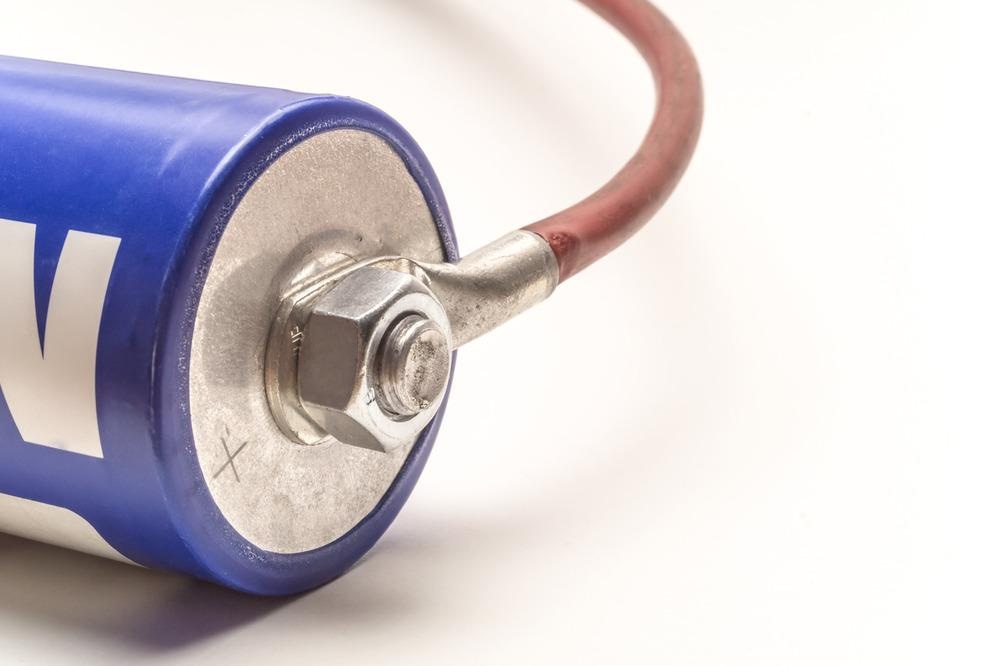.jpg) By Susha Cheriyedath, M.Sc.Reviewed by Skyla BailyNov 22 2021
By Susha Cheriyedath, M.Sc.Reviewed by Skyla BailyNov 22 2021A team of researchers from China has found a new high-performance electrode for capacitors based on nickel hydroxide and cobalt carbide nanocomposites. This research has been published in the Journal of Alloys and Compounds.

Study: Design and syntheses of Ni(OH)2@Co/C nanocomposite as electrode material for supercapacitor, Image Credit: Dr. Me/Shutterstock.com
Environment-friendly, high efficient, and renewable energy storage devices are crucial to future fossil fuel-less energy solutions. Supercapacitors are one such potential candidate.
What are the Current Supercapacitors and Their Limitations?
Among these supercapacitors, electric double-layer capacitors (EDLS) and pseudo-capacitors are known for their excellent cyclic stability and high power density. High power density leads to fast charging of these capacitors. The selection of electrode materials for these high-performance supercapacitors is currently one of the most ongoing researches.
Traditionally, many carbon materials are used as electrode materials for EDLCs due to their high power density and good cyclic stability, but these electrodes store energy by physically absorbing charges onto the surface, thus their energy density and specific capacitance are limited to only its surface area.
The other type of supercapacitor is pseudocapacitors, which are based on metal oxides, metal hydroxide, and electroactive polymers that have excellent specific capacitance, but due to certain irreversibility associated with the redox reaction process, and relatively low retention rate, their serviceability is somewhat compromised. Hence, combining electrode materials of EDLCs with pseudocapacitive properties can enhance the capacitive performance of the supercapacitor.
The transition metal hydroxides have higher theoretical specific capacitance and large specific surface area, which makes them widely used as potential electrode materials for pseudocapacitors.
Ni(OH)2 is one such example with low cost, environmental friendliness, and excellent specific capacitance, but the poor cyclic stability and electrical conductivity confine its practical application. As a solution, combining Ni(OH)2 with carbon compound materials that have excellent structural stability and electrical conductivity for the electrode can improve the drawbacks.
How Can Some of the Parameters be Improved?
The morphology of the composites is an important factor in the performance of the capacitor as they influence the diffusion of electrolyte ions and the number of catalytic active sites.
Electrode Applications: 3D Bundle-Like Multiwalled Carbon Nanotube Supercapacitors
The morphology of composites depends upon a few factors such as the synthesis method (solvothermal method, hydrothermal method, and sol-gel method), reaction system (solvent, pH), and post-treatment environment conditions (pyrolysis gas, and pyrolysis temperature).
Metal-organic frameworks (MOFs) are known for their ultra-high specific surface area. They are porous inorganic in organic matrix hybrid materials that are formed by coordination bonds between metal ions or clusters and organic ligands.
With a large number of exposed metal atoms unsaturated coordination metal sites on the surface, MOFs can be used as potential electrode materials for supercapacitors. However, MOFs also have certain limitations such as low electrical conductivity and poor chemical stability. Hence, by combining MOFs-derived compounds with transition metal hydroxides such as Ni(OH)2, enhanced performance can be achieved.
How is the Electrode Fabricated?
First, MOF was synthesized by heating the mixture of 1,3,5-tris (4-carbonyl phenyl oxy) benzene (H3TCPB), 1,3-bis (imidazole-1-ylmethyl)benzene (1,3-bimb), and a mixed solution of DMF/Dioxane/H2O.
Then, the MOF was carbonized under high temperature and nitrogen atmosphere to form a 3D petal-like morphology-based MOF-derived Co/C nanocomposite (NC1). Lastly, NC1 was added into a solution of NiSO4, aqueous K2S2O8, and NH3.H2O, heated and dried to obtain Ni(OH)2-NC1 (NC2).
What is the Result?
In the structural analysis, the team found that the MOF-Co/C composite exhibits chiseled regular block features with a rough and folded surface. Ni(OH)2-Co/C appears as 2D flake Ni(OH)2 scales growing on the surface of the MOF-Co/C.
The electrochemical measurements demonstrated that Ni(OH)2-Co/C-based electrode possesses a higher specific capacitance than that of the MOF-Co-based electrode under similar conditions. Additionally, the capacitance retention rate of the Ni(OH)2-Co/C electrode is impressive even after 1000 cycles.
The excellent stability and capacitance of -based electrodes are primarily due to the synergy between NC1 and Ni(OH)2. The rough and folded surface of NC1 composite and 2D flake Ni(OH)2 scales growing on the surface of NC1 are favorable for the diffusion of electrolyte ions, thus reducing the charge transfer resistance and consequently improving the energy storage capacity of composite.
Reference
T. Hu, L. Gao, W. Zhou, J. Zhang, Design and syntheses of Ni(OH)2@Co/C nanocomposite as electrode material for supercapacitor, Journal of Alloy and Compounds, Vol. 895 (2021), 162577. https://www.sciencedirect.com/science/article/pii/S0925838821039876?via%3Dihub
Disclaimer: The views expressed here are those of the author expressed in their private capacity and do not necessarily represent the views of AZoM.com Limited T/A AZoNetwork the owner and operator of this website. This disclaimer forms part of the Terms and conditions of use of this website.